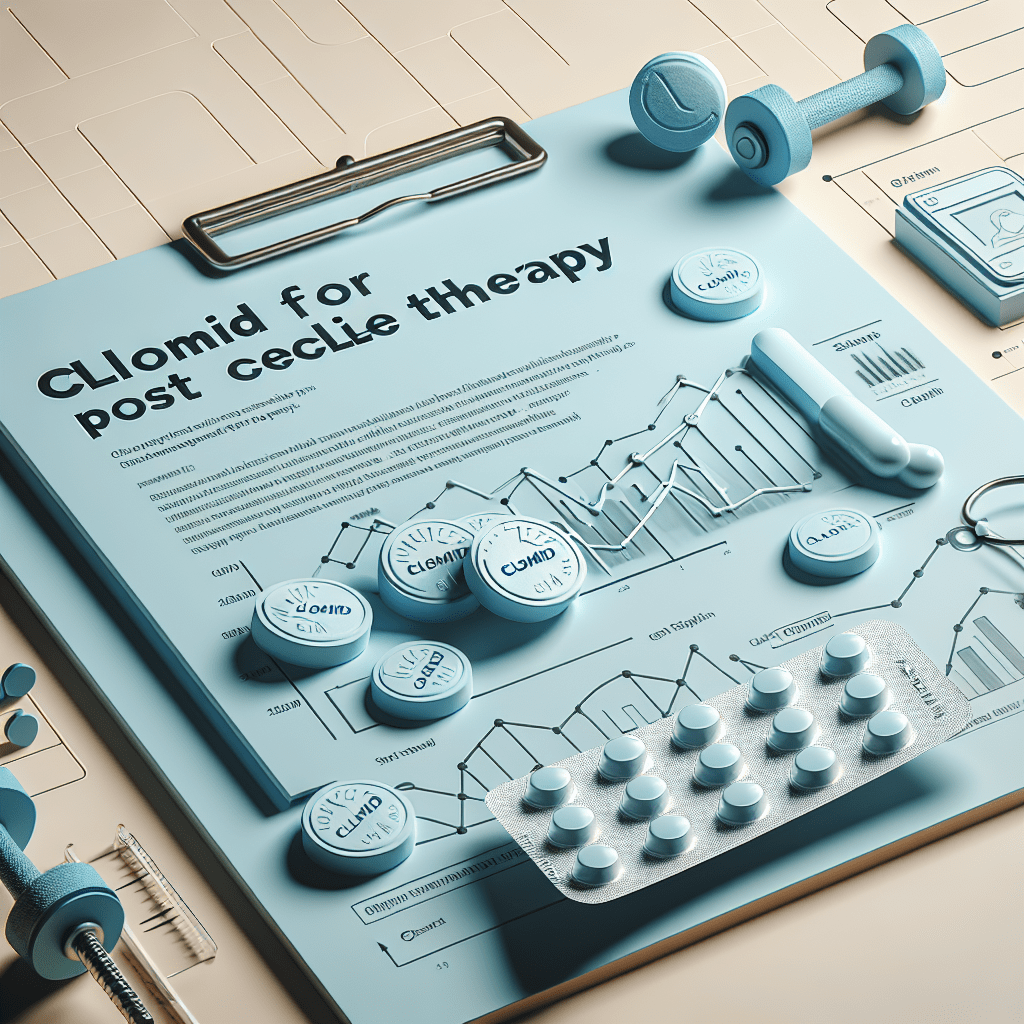
CLOMID FOR POST CYCLE THERAPY

Clomid, scientifically known as clomiphene citrate, is widely recognized for its role in post cycle therapy (PCT), primarily among individuals who use anabolic steroids or other performance-enhancing substances. The primary objective of PCT is to restore natural hormonal balance following a cycle of steroid use, ensuring the body’s endocrine system returns to its pre-cycle state. Clomid plays a pivotal role in this process by stimulating endogenous testosterone production, crucial for maintaining gains achieved during a steroid cycle while minimizing potential side effects associated with anabolic steroids.
Clomid is a selective estrogen receptor modulator (SERM). Its mechanism of action involves binding to estrogen receptors in the brain, specifically in the hypothalamus. By doing so, Clomid effectively tricks the body into perceiving a lower estrogen level, prompting the pituitary gland to release more luteinizing hormone (LH) and follicle-stimulating hormone (FSH). This increase in LH and FSH is crucial, as these hormones signal the testes to produce more testosterone, thus restoring the body’s natural hormonal balance.
One of the significant benefits of using Clomid for post cycle therapy is its ability to mitigate the effects of low testosterone levels, such as fatigue, loss of muscle mass, and decreased libido. By kick-starting the body’s production of testosterone, Clomid helps maintain gains from the steroid cycle and mitigate the adverse effects associated with suppressed hormone levels. This highlights the importance of incorporating Clomid into a well-structured PCT regimen.
However, it’s crucial to understand the correct dosage and duration of Clomid administration in PCT. A typical regimen might involve a loading dose of 100 mg per day for the first week, followed by a reduction to 50 mg per day for two to three weeks. This allows the body sufficient time to rebound hormonally. Users should always consult with a healthcare professional to determine the appropriate dosage based on individual circumstances and the specifics of their steroid cycle.
In conclusion, Clomid is a critical component of post cycle therapy, offering significant benefits for those looking to restore hormonal balance following a steroid cycle. By effectively stimulating natural testosterone production, Clomid helps maintain muscle gains and minimize side effects associated with steroid use. While Clomid is generally well-tolerated, users should be aware of potential side effects, including visual disturbances and mood swings, and consult professionals for tailored advice.
FAQs
Q: How does Clomid work in post cycle therapy?
A: Clomid acts as a SERM, binding to estrogen receptors in the brain. This increases LH and FSH production, stimulating natural testosterone production.
Q: What is the typical Clomid dosage for PCT?
A: A common regimen is 100 mg daily for the first week, followed by 50 mg daily for two to three weeks, but this can vary based on individual needs.
Q: Are there side effects of using Clomid?
A: Common side effects include visual disturbances and mood swings. It’s crucial to monitor one’s health and consult a healthcare professional for guidance.
Q: Can women use Clomid for PCT?
A: Clomid is typically used by men for PCT due to its testosterone-boosting effects. Women should consult a healthcare professional for advice tailored to their needs.
For more information, visit this link.
Clomid, also known as clomiphene citrate, is a medication commonly utilized in post cycle therapy (PCT) to help restore hormonal balance following anabolic steroid use. An integral aspect of PCT, Clomid helps stimulate the pituitary gland to increase the production of luteinizing hormone (LH) and follicle-stimulating hormone (FSH), which in turn encourages the testes to produce more natural testosterone. This process is crucial because anabolic steroid cycles typically suppress natural testosterone production, leading to potential side effects such as decreased libido, mood swings, and loss of muscle gains once the cycle ends. By incorporating Clomid in PCT, individuals aim to reduce these undesirable effects, promoting a quicker hormonal recovery and helping maintain the gains achieved during the steroid cycle. However, the use of Clomid should be under the guidance of a healthcare professional to ensure proper dosing and to mitigate any side effects such as vision disturbances or the exacerbation of psychological issues.















